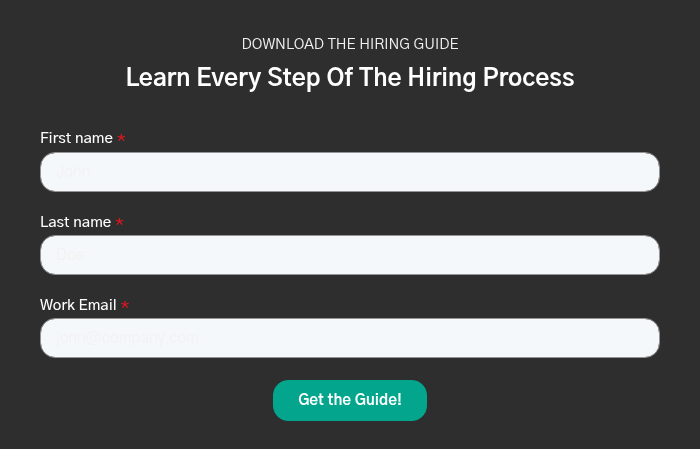
Assessing employees' behaviors, motivators, and capacities is critical in today's workplace.
When it comes to understanding your team, the stakes couldn’t be higher.
Miscommunication and disengagement aren’t just frustrations; they lead to underperformance and even turnover. As a leader, it’s not enough to hope your employees work well together — you need tools that help you understand what drives them.
At The Metiss Group, we’ve spent 30 years mastering the science of behavior at work, using behavioral science assessments to help leaders make informed decisions.
In this article, you'll gain clarity on two leading tools, Predictive Index and TTI Success Insights, and learn how they can shape your hiring and leadership strategy.
What is Predictive Index?
Sample Predictive Index results
Predictive Index offers a tool called the Behavioral Assessment. This single-science tool measures a person’s behavior across four dimensions:
- Collaborative vs. Independent
- Reserved vs. Sociable
- Driving vs. Steady
- Flexible vs. Precise
For each of these four dimensions, the person being assessed is placed somewhere between each extreme. The result is a four-point line. Check out this sample report for a visual.
Predictive Index also offers a Cognitive Assessment tool. This measures a person’s cognitive ability, which suggests whether that person could learn new skills in their role at your company.
Predictive Index is widely used among hiring teams and employers looking to leverage their employees’ different behavioral traits. According to their website, Predictive Index has administered over 37.5 million behavioral assessments over their 65 years in business. It’s a simple tool that’s easy for both employers and employees to understand.
What is TTI Success Insights TriMetrix?
TTI Success Insights offers multiple science assessments, and when combined, companies can use a multi-science approach to understand candidates and employees. This makes the results a bit more complicated, but the thorough insights help employers understand their employees on a much deeper level.
At The Metiss Group, we use their TriMetrix assessment, which looks at behaviors, motivators, and capacities.
Behaviors (DISC)
Sample DISC graph
DISC stands for Dominance, Influencing, Steadiness, and Compliance.
Although these are different titles than those used by Predictive Index, the DISC uses the same types of behaviors. For example, someone who ranks high in Sociable from their Predictive Index assessment will also rank high in Influencing from their TTI Insights assessment.
Motivators
While the DISC or the Predictive Index Behavioral Assessment will give insight into how you do things, the Motivators assessment provides insight into why you do things.

Sample Motivators graph
It measures six different interests or values:
- Theoretical: motivated by knowledge
- Utilitarian: motivated by money
- Aesthetic: motivated by form and harmony
- Social: motivated by helpfulness
- Individualistic: motivated by power
- Traditional: motivated by order
Two people who have similar DISC results could have completely different motivators. In other words, just because they behave the same doesn’t mean they’re motivated by the same things.
For example, two extroverts could appear to have the same personality according to the DISC or the Predictive Index. But when you look at what motivates these two individuals, you find that one is motivated by learning (theoretical) while the other is motivated by power (individualistic).
These misalignments cause friction when they work together on a team, especially when their differences in motivation aren’t understood by themselves or their employer.
Capacities (Hartman Value Profile)
This science measures the raw capacities in someone’s toolbox. For example, are they good at problem-solving, correcting others, and understanding others?
When you’re considering promoting an employee to a leadership position, you can look at this part of the assessment and see if they have the capacity to be a leader. Maybe they still need to sharpen their tools (i.e. brush up on their leadership skills) – but do they have that tool in their toolbox?
The Hartman Value Profile is the only science mentioned in this article that uses deductive reasoning.
When you combine all three sciences, you get a "TriGraph" from TTI Success Insights. Download a sample report here.
What Predictive Index and TTI Success Insights have in common
Both assessments (PI Behavioral Insights and TTI TriMetrix) can measure a person’s behaviors.
In fact, they both measure the same behaviors. Check out the two examples below. Using the Predictive Index, this person ranks low for Independent and Sociable but high for Steady and Precise. If they also took the DISC from TTI Success Insights, they’d typically also rank low for Dominant and Influencing but high for Steadiness and Compliance.
When you put the Predictive Index and the DISC next to each other, you can see they both communicate the same data — one is just rotated 90 degrees.
The Predictive Index Behavioral Assessment and the behavior and motivator assessments through TriMetrix both use inductive science. This means the tool asks you about your preferences, and then using inductive reasoning, they make assertions about how you think.
Because the answers are self-reported, both assessments have about an 85% face validity — in other words, although no self-reported assessment can be 100% accurate, these two are pretty high up there.
Another thing to keep in mind for these assessments is there is no right or wrong answer. Being dominant isn’t a bad thing; neither is being motivated by money. However, some roles might have preferences.
For example, a high Theoretical might be great in a role where research is required to find a new solution to an old problem. But that person might get bored in a repetitive, simple role — anything that requires very little critical thinking.
Drawbacks to Predictive Index Behavioral Assessment
When people first use Predictive Index, they typically like it – it's amazing to articulate the difference between one person and another in a way that is much more objective than observations.
However, people start to realize its drawbacks over time.
You could have three or four candidates with very similar profiles based on their Predictive Index results. But even though they looked exactly the same on paper, you could tell these were all dramatically different people.
The drawback to Predictive Index is it’s only a single science: it only looks at behavior. And if people are multidimensional, then why would you only use one assessment?
Let me take you through a quick analogy. Say you go to the doctor because of pain in your arm. You get to the doctor’s office, and the doctor takes your temperature.
The doctor looks at the thermometer and says, “Oh, you have a broken arm. We need to take you into surgery.”
“Woah woah woah,” you say. “You can’t tell that from a thermometer! I’m not going into surgery.”
The lesson here? Sometimes you need multiple diagnostic tools to see the full picture.
Drawbacks to TTI Success Insights TriMetrix
The TriMetrix assessments are more complex than the Predictive Index Behavioral Assessment.
When an individual takes the Predictive Index, the hiring or HR team will receive a three-page report. On the other hand, they’ll receive about 15 pages summarizing the results of the TriMetrix report (and this can be expanded to 60+ in a coaching report for a new hire).
So for teams looking for just basic behavioral analysis, the Predictive Index (or another single-science assessment) might be the better option.
Any multi-science assessment is also typically more expensive than a single-science tool. You’ll pay more to implement TriMetrix assessments in your team than you would for Predictive Index Behavioral Assessments.
TriMetrix also doesn’t offer a cognitive assessment, whereas Predictive Index does. At The Metiss Group, we combine the TTI Insights TriMetrix with the Watson Glaser cognitive test to close that gap.
Why we use TTI Success Insights TriMetrix
At The Metiss Group, we’ve never seen a team experience tension simply because one person was an introvert and the other person was an extrovert.
But if you only use a single-science approach, then you’ll only receive behavior insights (such as introvert vs. extrovert).
If a team is experiencing tension, it’s typically because their motivators are misaligned — then, those employees act out those misalignments based on their behaviors. But if the motivators are aligned, we can leverage the differences in behaviors to accomplish the same thing.
The bottom line about Predictive Index vs TTI Success Insights TriMetrix
Both Predictive Index and TTI Success Insights provide valuable insights into employee behaviors. But TTI's multi-science approach offers deeper, more comprehensive assessments.
If you're looking for quick behavioral insights, Predictive Index may be enough. However, for a fuller picture including motivators and capacities, TTI Success Insights TriMetrix is the stronger option.
Now that you understand Predictive Index vs TTI Success Insights TriMetrix, the next thing you need to do is understand how these assessments fit into the hiring process. Read more about The Hiring Process Coach™ and how it differs from traditional recruiting.

